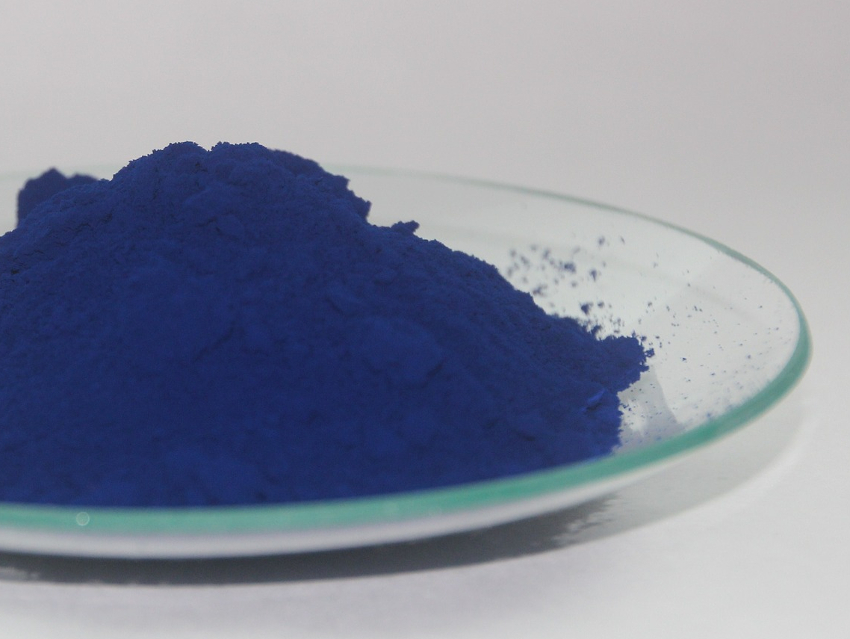Cobalt blue (CoAl2O4) is used as an intensely blue, easy-to-synthesize, and stable pigment. However, cobalt is toxic and environmentally harmful. Synthesizing alternative pigments with lower toxicity but a similar color and intensity has been challenging so far.
M. A. Subramanian and colleagues, Oregon State University, Corvallis, USA, have synthesized a new class of intensely blue inorganic pigments, called “hibonite blues”. The team mixed and heated CaCO3, Al2O3, CoCO3, and TiO2 to obtain CaAl12–2xCoxTixO19 (0 < x ≤ 1). The compounds crystallize in a hibonite (CaM12O19) structure. The hue of the pigments can be tuned by changing the value of x. This tunability is rare in blue pigments. The researchers attribute the compounds’ colors to a strong d–d transition of tetrahedrally coordinated Co2+.
In contrast to cobalt blue, which contains 33 % of Co by mass, the hibonite blues have Co contents as low as 4 % by weight. This makes them less harmful to human health and the environment, as well as cheaper to produce. The team also found that the compounds are stable in both strongly acidic and basic environments.
- Hibonite Blue: A New Class of Intense Inorganic Blue Colorants,
Brett A. Duell, Jun Li, M. A. Subramanian,
ACS Omega 2019, 4, 22114–22118.
https://doi.org/10.1021/acsomega.9b03255



